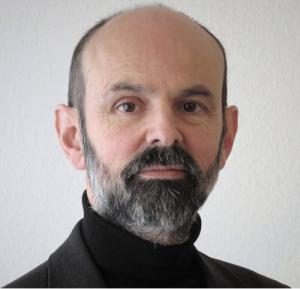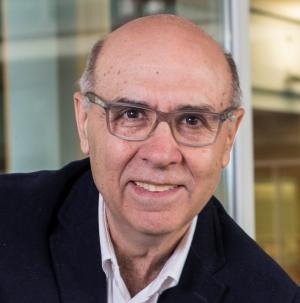
IMI Programme Office: Why was a project like yours needed in the first place?
Francois Pognan: The pharmaceutical industry has been producing a very large amount of data: preclinical toxicology data that is needed to develop compounds into drugs. After fulfilling its purpose, this data usually rests in archives. This is despite the fact that there is a lot of knowledge to be extracted from it, and this knowledge can be used to improve the process and the speed with which we develop new drugs.
eTOX was about finding a way to reuse this wealth of data. This is not simple because one needs to extract, harmonise and standardise it. Also, the more data we have, the better.
That’s why it was necessary to build a consortium where we could gather several companies to bring together this archived data, as well as the academic people who have the skills and knowledge to build databases, structure the data, and use it to build predictive algorithms. It was the only way to go forward.
IMI Programme Office: What were the main project achievements?
Francois Pognan: We achieved what we set out to do. Firstly, we built a large database and organised all this data after extraction, which was not an easy endeavour. Also, we constructed the ontologies, standardised terminology, to be able to handle all this data. The database can now be searched and mined with tools that have been built by the academic part of the consortium.
Secondly, from all this standardised data, we constructed predictive in silico [computer] algorithms that have the ability to give researchers an idea of potential toxicity of compounds. This has also been done by the academic partners in the project.
Ferran Sanz: The database contains information about 2 000 drugs and drug candidates that were investigated in the pharmaceutical companies. The studies done on these compounds amount to about 9 million data points about the toxicology of those compounds. This is a wealth of data which can be used to develop predictive models.
IMI Programme Office: Which particular achievement are you most proud of?
Francois Pognan: Everything. Just the fact that we were able to share all this data between companies, who are normally competitors, is a big achievement. We found a way to share the unsharable. Also, the fact that we built a database of high quality, containing a large amount of data.
Probably another pride is that we were able to construct the in silico algorithms which we can now use in the pharmaceutical industry to help predict the toxicity of compounds. Overall, this had never been done before. Being able to share all this data, to organise it and to build those algorithms is a first and I think we can be very proud of that.
Ferran Sanz: Just talking about the in silico models, we have been able to develop more than 200 of them. And we didn’t just develop them; these

models have been perfectly annotated in terms of the data and methods used for developing them. Everything is very well documented so the predictions and the reliability of the predictions can be clearly assessed on the basis of all the documentation that is available for each of these models.
Francois Pognan: There is another thing I am personally proud of: we managed to make a very large number of very diverse people work together. Ferran and I were somehow like orchestra conductors: we had all those instruments that we had to coordinate, so they could play together and make a nice symphony.
IMI Programme Office: Are all the tools generated by the project already being used by the pharmaceutical industry?
Francois Pognan: Yes, they are being used in the industry, perhaps slightly more the data mining than the models so far, but they are being used as well. The database is used to find precedents. For example, if there is a new compound with a toxicity that is disturbing for whatever reason, we go back to the eTOX database, and try to find a similar compound with a similar structure or similar effect in similar species.
IMI Programme Office: Could we say that this is already speeding up the drug development process?
Francois Pognan: It is hard to estimate, but certainly in some places it does save time, and it also allows us to have data and information that we wouldn’t have otherwise. So not only do we save time, but most likely we also have better information so that we are able to make better-informed decisions, and make safer drugs in the end, for the benefit of patients.
IMI Programme Office: Is the work done in eTOX also contributing to the reduction of animal use in preclinical experiments, or more broadly the 3Rs (replacement, reduction and refinement)?
Francois Pognan: Yes, we can say so. We have some examples where information provided by the eTOX database prevented companies from running new studies to acquire that same information. So that’s the replacement part of the 3Rs because you don’t run a study.
We have also contributed to the reduction because sometimes just by having more information you may not need as many doses or as many animals per group in a study.
Also refinement is very clear thanks to the mass of data that we now have in one place – we can extract more information from a single study. And since you reuse data that already exists to generate new knowledge, this is the best refinement that you can think of for animal studies.
IMI Programme Office: What was the biggest benefit of this project for the academic partners?
Ferran Sanz: Firstly, we have learned to work together with pharmaceutical companies. Secondly, we had access to data that we had never accessed before for developing better algorithms and better models.
IMI Programme Office: How did the SMEs in the project benefit from participating?
Francois Pognan: In several ways. The first thing is that potentially eTOX is now a business. The database which we created is now commercially available, and the SMEs are in charge of maintaining it and managing it. So if it goes well, they will benefit directly from a business point of view.
Another benefit is that they have been working with their main customers in the pharmaceutical industry, extremely closely. We know each other better than ever, and from an SME point of view, knowing exactly who your customer is, what they want, how they think and what they do, is a tremendous advantage.
Ferran Sanz: Even for the academic world, the way in which we have learned how to collaborate with the pharmaceutical industry is potentiating our capabilities to create spin offs and to establish research contracts with the pharmaceutical industry, beyond this particular project.
IMI Programme Office: Would all this have been possible without IMI?
Francois Pognan: No, no way. As I said earlier, the pharmaceutical companies are usually competitors and we don’t work together. Thanks to IMI, we could not only share our resources for the first time but we also had access to the academic knowledge and skills, which we don’t necessarily have internally.
Ferran Sanz: I had other experiences of collaborating with pharmaceutical companies in the framework of EU projects in the past, before IMI, and I have to say that the way in which pharmaceutical companies are committed in IMI projects is much more serious than in classical European projects. I think that’s because in IMI projects, they are not there because of funding; they are there because they have a role in deciding on critical aspects of research which they want to address. So the way in which they participate in IMI projects, for me, was surprisingly active in comparison with other EU projects.
IMI Programme Office: What about the future? What will happen with all the knowledge and tools generated within eTOX?
Francois Pognan: eTOX gave rise to a successor IMI project, eTRANSAFE, which will compare or asses the validity and the predictive value of animal data for human safety. Without eTOX, eTRANSAFE could not have existed, and eTRANSAFE will eventually have the potential to modify the way we work in preclinical studies. For example, if we realise that certain studies are not predictive at all for human safety, there is no point in running them, but we cannot know that until we do that thorough assessment of the validity of animal studies. If nothing else, one of the greatest values of eTOX was to have given birth to eTRANSAFE, a new project that will have a much larger impact than even eTOX.
Ferran Sanz: There is also the commercial exploitation of the eTOX database. There are two SMEs that are particularly involved in this commercial exploitation and it is going well. We are realistic and we understand that the commercial exploitation could be to some extent influenced by the fact that most of the eTOX partners are also involved in the new IMI project eTRANSAFE, that is trying to extend the eTOX achievements. In any case, the fact that there is commercial exploitation in place and that there are customers for this, is a demonstration that the results of this project have more than just academic interest as a value.
